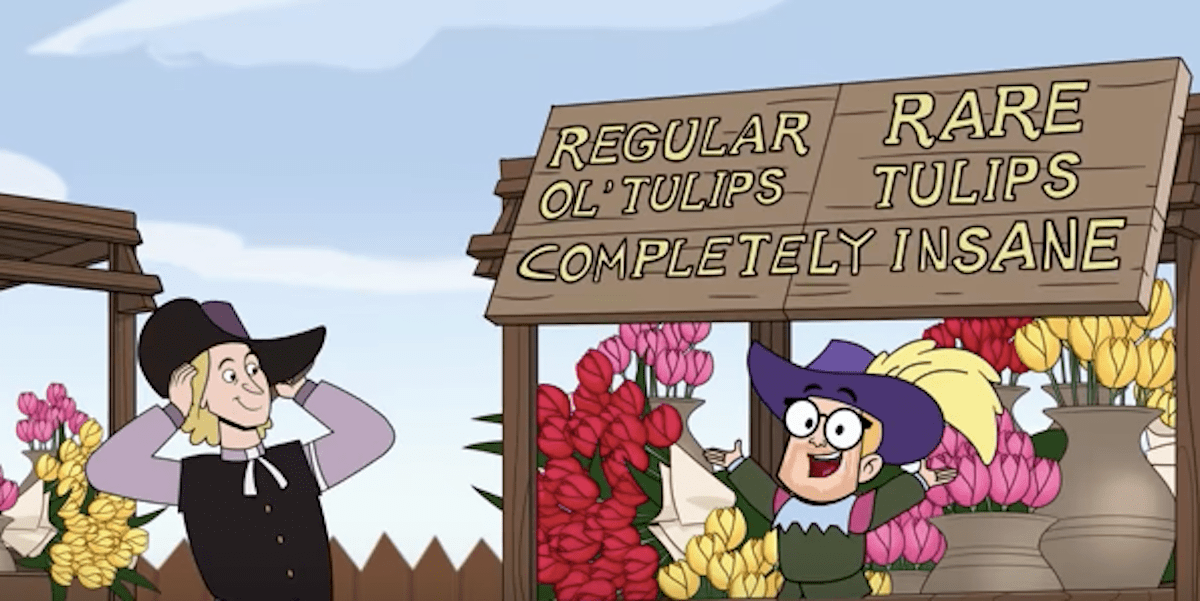Adam Ruins Everything Explains How the Dutch Lost It Over Tulips

The first economic bubble sprang from tulip bulbs in 1630. Why did so many people lose their ability to reason over a flower?
Adam takes us through a fun, colorful guided history of the “Tulipmania” that gripped the Dutch in the 17th century. Tulips were a new commodity when they were introduced to the Netherlands, and as such, they fast became a status symbol that everyone wanted in on.
The rarer the tulip, the better and the more outlandish the price; here they’re described as “the Dutch version of limited edition Beanie Babies.” (We know how the speculative Beanie Baby market turned out.)
Because of the unique nature of how tulips grow, people began to purchase not the actual bulb itself but a contract promising it in the future—effectively, a futures contract. This lead to wild financial speculation, contracts constantly changing hands, and eventually full-blown “Tulipmania!”
Adam doesn’t go into it here, but the repercussions of this speculation make for fascinating (and ever-timely) reading. In 1637, the tulip market abruptly collapsed. As Wikipedia explains:
Tulip mania reached its peak during the winter of 1636–37, when some bulbs were reportedly changing hands ten times in a day. No deliveries were ever made to fulfil any of these contracts, because in February 1637, tulip bulb contract prices collapsed abruptly and the trade of tulips ground to a halt.
The collapse began in Haarlem, when, for the first time, buyers apparently refused to show up at a routine bulb auction. This may have been because Haarlem was then at the height of an outbreak of bubonic plague. The existence of the plague may have helped create a culture of fatalistic risk-taking that allowed the speculation to skyrocket in the first place; this outbreak might also have helped to burst the bubble.
One of my favorite books of all time, Extraordinary Popular Delusions and the Madness of Crowds, published in 1841 by Charles Mackay, details the mania at its height:
Many individuals grew suddenly rich. A golden bait hung temptingly out before the people, and, one after the other, they rushed to the tulip marts, like flies around a honey-pot. Every one imagined that the passion for tulips would last for ever, and that the wealthy from every part of the world would send to Holland, and pay whatever prices were asked for them. The riches of Europe would be concentrated on the shores of the Zuyder Zee, and poverty banished from the favoured clime of Holland. Nobles, citizens, farmers, mechanics, seamen, footmen, maidservants, even chimney sweeps and old clotheswomen, dabbled in tulips.
Tulip mania might strike us now as absurd, but economic bubbles are very real, and rampant speculation continues. Now, if I could interest you in this collection of rare Beanie Babies …
(image: screengrab)
Want more stories like this? Become a subscriber and support the site!
—The Mary Sue has a strict comment policy that forbids, but is not limited to, personal insults toward anyone, hate speech, and trolling.—
Have a tip we should know? tips@themarysue.com